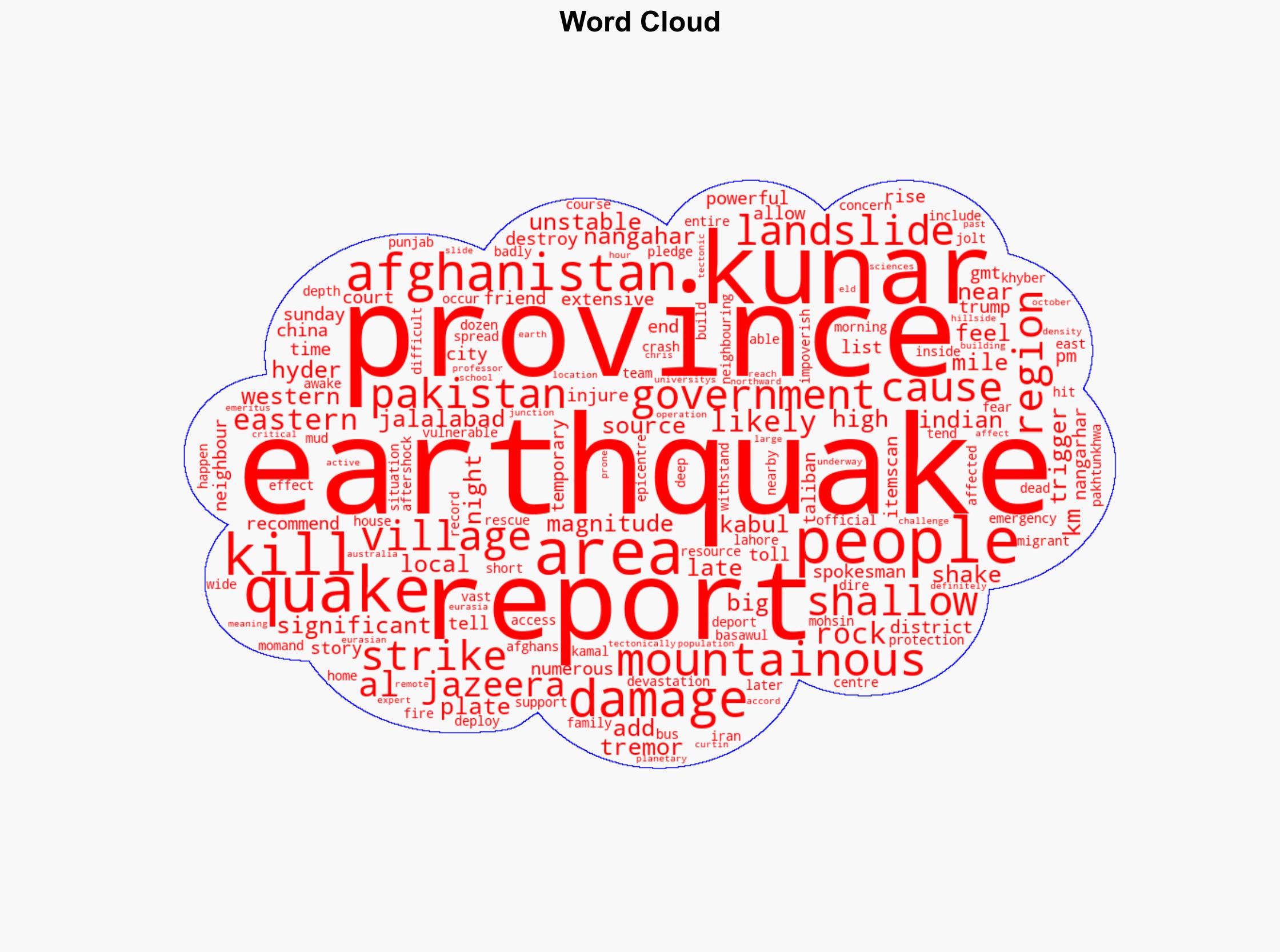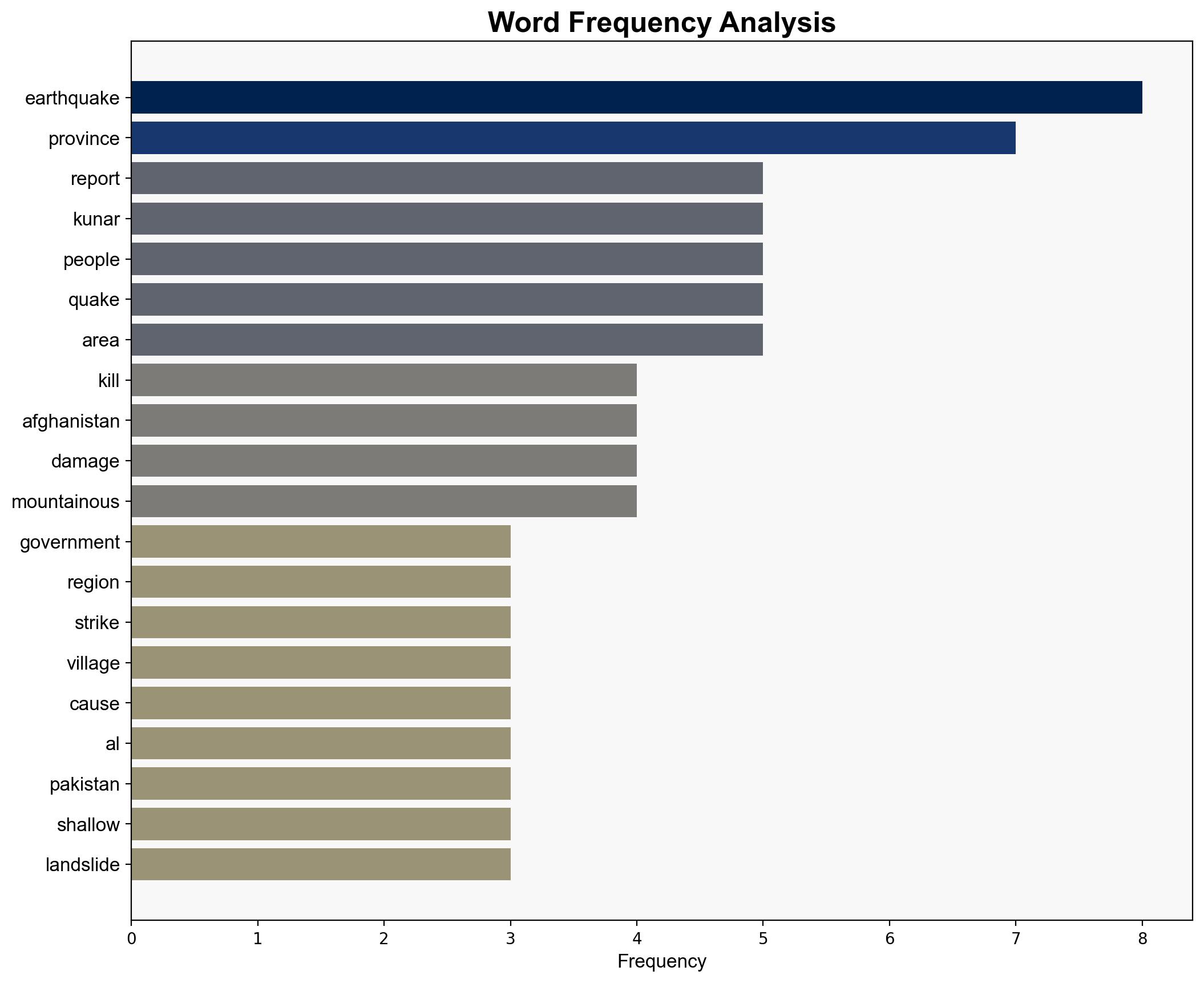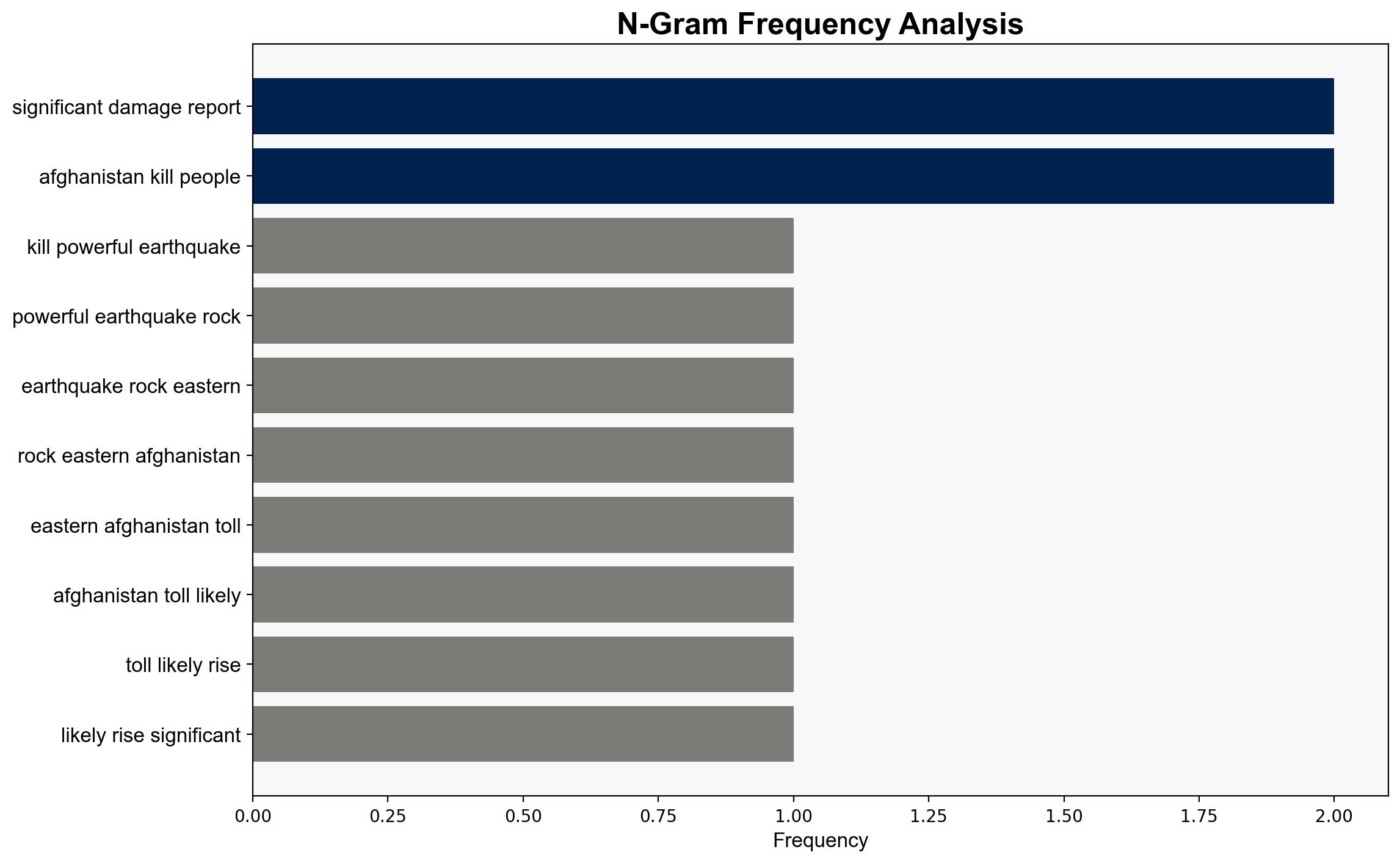Powerful earthquake rocks Afghanistans Kunar at least 10 killed – Al Jazeera English
Published on: 2025-09-01
Intelligence Report: Powerful earthquake rocks Afghanistan’s Kunar, at least 10 killed – Al Jazeera English
1. BLUF (Bottom Line Up Front)
The earthquake in Afghanistan’s Kunar province has resulted in significant casualties and infrastructure damage, with the potential for a rising death toll and further humanitarian challenges. The most supported hypothesis suggests that the earthquake’s impact will exacerbate existing vulnerabilities in the region, necessitating immediate international aid and long-term resilience planning. Confidence Level: High. Recommended action includes mobilizing international relief efforts and enhancing regional disaster preparedness.
2. Competing Hypotheses
1. **Hypothesis A**: The earthquake will primarily cause immediate humanitarian challenges, with the death toll and infrastructure damage being the main concerns. This will prompt a short-term international response focused on relief efforts.
2. **Hypothesis B**: Beyond immediate humanitarian impacts, the earthquake will have long-term socio-political and economic repercussions, potentially destabilizing the region further. This includes exacerbating existing tensions and vulnerabilities, leading to prolonged international involvement.
Using the Analysis of Competing Hypotheses (ACH) 2.0, Hypothesis B is better supported due to the region’s pre-existing socio-economic vulnerabilities and the potential for the earthquake to trigger further instability.
3. Key Assumptions and Red Flags
– **Assumptions**: It is assumed that the region’s infrastructure is significantly compromised, and that local government resources are insufficient to manage the crisis effectively.
– **Red Flags**: The lack of comprehensive data on the full extent of damage and casualties. Potential underreporting due to limited access to remote areas.
– **Blind Spots**: The impact on local governance structures and potential exploitation of the situation by non-state actors.
4. Implications and Strategic Risks
The earthquake could lead to cascading threats, including increased displacement, resource scarcity, and heightened tensions among local communities. The region’s tectonic activity suggests a risk of further seismic events, which could compound current challenges. Geopolitically, the situation may attract international actors seeking to influence the region’s recovery efforts, potentially leading to strategic realignments.
5. Recommendations and Outlook
- Mobilize international aid with a focus on immediate relief and long-term infrastructure rebuilding.
- Enhance regional disaster preparedness and resilience planning to mitigate future risks.
- Scenario Projections:
- Best Case: Rapid international response stabilizes the region, preventing further humanitarian crises.
- Worst Case: Prolonged instability leads to increased regional tensions and potential conflict.
- Most Likely: A mixed outcome with initial relief efforts followed by ongoing challenges in rebuilding and stabilization.
6. Key Individuals and Entities
– No specific individuals are mentioned in the source text. Focus is on regional and international entities involved in disaster response and recovery.
7. Thematic Tags
national security threats, regional focus, humanitarian crisis, disaster response, geopolitical stability




